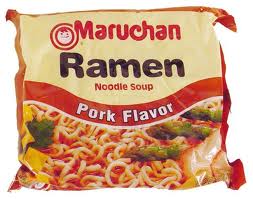That’s a question some people are asking in San Antonio.
Thankfully, the local debate over whether to grant Maruchan Inc. of Japan millions of dollars to pay people very little money to make noodles has transcended the mere question of how many workers it would employ.
And it’s heartening — in a depressing sort of way, of course — that some of us are actually worried.
We are worried because the people making the noodles would earn minimum wage: $7.25 an hour, less than a living wage.
At the risk of dampening anyone’s good cheer, here are a few more reasons for us to be worried.
Texas already ranks first in the nation for jobs at or below the minimum wage.
(Go Texas! We’re No. 1!)
In fact, 37 percent of all jobs added in Texas in 2010 paid minimum wage or less. Overall, about a third of all jobs in Texas fail to support a family of four.
Ed Sills noted the irony in his email newsletter:
What a metaphor. Ramen noodles are a classic dish for starving artists and students who have to keep their food budgets to the penny, and the minimum wage is the classic wage that forces anyone to keep their food budgets to the penny.
By my calculations, the $5.8 million county subsidy mentioned in the article would pay the 600 workers for 1,333 hours, or about eight months. ($7.25 times 600 is $4,350 an hour. $5.8 million divided by $4,350 is 1,333 hours.) Apparently, there will be basic benefits as well, so a rule of thumb might be that the county would pay the first half-year of the employees’ meager salaries.
What a crock, a clear case of “off-shoring” by Japan to the U.S. (I’m old enough to remember when the U.S. was exploiting the cheap labor in Japan for manufacturing, but somehow I don’t think these noodles will be making their way back to Japan.) I’ll give them this: as with Henry Ford, the Maruchan proprietors are making certain their workers will be able to afford to buy their product, though in this case they will be able to buy little else
$7.25 times 2080, the number of working hours in a year, comes to $15,080 for these workers’ annual salaries. That’s not a whole lot more than I got for my stipend as a graduate student in the math department at Rice for the 1988-89 academic year. I don’t much care for ramen noodles myself, but that is the kind of food one has to eat at that income level. I guess that’s better than nothing, but shouldn’t we, couldn’t we, maybe aim a little higher than that? Burka has more.

